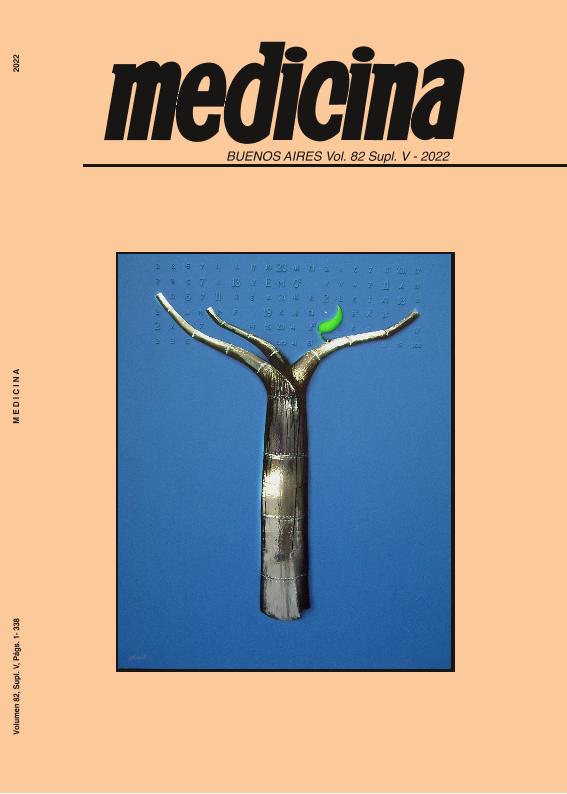Mostrar el registro sencillo del ítem
dc.contributor.author
Rias, Ezequiel Ignacio

dc.contributor.author
Simone, Santiago
dc.contributor.author
Carignano, Camila

dc.contributor.author
Stupniki, Sofia

dc.contributor.author
Vera, Marcela Sonia

dc.contributor.author
Spitzmaul, Guillermo Federico

dc.contributor.author
Dionisio, Leonardo Raul

dc.date.available
2023-07-26T17:42:20Z
dc.date.issued
2022
dc.identifier.citation
Alterations of the efferent system in outer hair cells of a mouse model of hearing loss; LXVII Reunión Anual de la Sociedad Argentina de Investigación Clínica; LXX Reunión Anual De La Sociedad Argentina De Inmunología; 3er Congreso Franco-Argentino De Inmunología y Reunión Anual 2022 De La Sociedad Argentina De Fisiología ; Mar del Plata; Argentina; 2022; 222-222
dc.identifier.issn
0025-7680
dc.identifier.uri
http://hdl.handle.net/11336/205659
dc.description.abstract
KCNQ4 is a voltage-gated potassium channel responsible for ex- truding K+ from the outer hair cells (OHC) after sound stimulation. OHC excitability is under the control of the efferent pathway mediat- ed by the Medial Olivocochlear (MOC) system. In response to over- stimulation, this system activates the nicotinic acetylcholine receptor (nAChR) α9α10, which triggers calcium-dependent K+ channels (BK and SK2) activation, increasing K+ cell permeability, and helping KCNQ4 to restore the membrane potential. KCNQ4 absence leads to intracellular accumulation of K+ and chronic depolarization that may damage hair cells, causing hearing loss. We hypothesized that the lack of KCNQ4 in mice (KO) affects the organization and func- tion of the MOC system, impacting the hearing process. Using con- focal imaging, we evaluated the MOC terminals contacting OHC at two ages: when the auditory system is finishing maturation (2 weeks old (W)) and when it is fully developed (4W). At the mature age, the MOC terminals are located exclusively in the basal domain of OHC in wild-type (WT) animals. At 2W, both genotypes showed the same percentage (~50%) of synaptic contacts located in the lateral do- main. Later on, terminals were relocated to the basal membrane in WT while ~32% of them remain in the lateral domain in KO animals at 4W. Moreover, we detected a decrease in the number of synaptic contacts per OHC in 4W KO mice. The volume of the synaptic ter- minals did not change among genotypes at any age. On the other hand, we analyzed by qPCR the gene expression of the postsynap- tic efferent components located in the MOC synapse. The mRNA expression of α10 decreased ~3.5-fold with no changes in the α9 subunit, while BK and SK2 mRNA decreased ~8-fold in 4W KO ani- mals. These results demonstrate that chronic depolarization of OHC impairs the maturation process of the efferent synaptic innervation and the expression of its components in OHC, altering cell function and contributing to hearing detriment.
dc.format
application/pdf
dc.language.iso
eng
dc.publisher
Fundacion Revista Medicina
dc.rights
info:eu-repo/semantics/openAccess
dc.rights.uri
https://creativecommons.org/licenses/by-nc-sa/2.5/ar/
dc.subject
KCNQ4
dc.subject
DEAFNESS
dc.subject
POTASSIUM
dc.subject
COCHLEA
dc.subject.classification
Neurociencias

dc.subject.classification
Medicina Básica

dc.subject.classification
CIENCIAS MÉDICAS Y DE LA SALUD

dc.title
Alterations of the efferent system in outer hair cells of a mouse model of hearing loss
dc.type
info:eu-repo/semantics/publishedVersion
dc.type
info:eu-repo/semantics/conferenceObject
dc.type
info:ar-repo/semantics/documento de conferencia
dc.date.updated
2023-06-15T17:54:53Z
dc.identifier.eissn
1669-9106
dc.journal.volume
82
dc.journal.number
Suplemento V
dc.journal.pagination
222-222
dc.journal.pais
Argentina

dc.journal.ciudad
Buenos Aires
dc.description.fil
Fil: Rias, Ezequiel Ignacio. Consejo Nacional de Investigaciones Científicas y Técnicas. Centro Científico Tecnológico Conicet - Bahía Blanca. Instituto de Investigaciones Bioquímicas de Bahía Blanca. Universidad Nacional del Sur. Instituto de Investigaciones Bioquímicas de Bahía Blanca; Argentina. Universidad Nacional del Sur. Departamento de Biología, Bioquímica y Farmacia; Argentina
dc.description.fil
Fil: Simone, Santiago. Consejo Nacional de Investigaciones Científicas y Técnicas. Centro Científico Tecnológico Conicet - Bahía Blanca. Instituto de Investigaciones Bioquímicas de Bahía Blanca. Universidad Nacional del Sur. Instituto de Investigaciones Bioquímicas de Bahía Blanca; Argentina
dc.description.fil
Fil: Carignano, Camila. Consejo Nacional de Investigaciones Científicas y Técnicas. Centro Científico Tecnológico Conicet - Bahía Blanca. Instituto de Investigaciones Bioquímicas de Bahía Blanca. Universidad Nacional del Sur. Instituto de Investigaciones Bioquímicas de Bahía Blanca; Argentina. Universidad Nacional del Sur. Departamento de Biología, Bioquímica y Farmacia; Argentina
dc.description.fil
Fil: Stupniki, Sofia. Consejo Nacional de Investigaciones Científicas y Técnicas. Centro Científico Tecnológico Conicet - Bahía Blanca. Instituto de Investigaciones Bioquímicas de Bahía Blanca. Universidad Nacional del Sur. Instituto de Investigaciones Bioquímicas de Bahía Blanca; Argentina. Universidad Nacional del Sur. Departamento de Biología, Bioquímica y Farmacia; Argentina
dc.description.fil
Fil: Vera, Marcela Sonia. Consejo Nacional de Investigaciones Científicas y Técnicas. Centro Científico Tecnológico Conicet - Bahía Blanca. Instituto de Investigaciones Bioquímicas de Bahía Blanca. Universidad Nacional del Sur. Instituto de Investigaciones Bioquímicas de Bahía Blanca; Argentina. Universidad Nacional del Sur. Departamento de Biología, Bioquímica y Farmacia; Argentina
dc.description.fil
Fil: Spitzmaul, Guillermo Federico. Consejo Nacional de Investigaciones Científicas y Técnicas. Centro Científico Tecnológico Conicet - Bahía Blanca. Instituto de Investigaciones Bioquímicas de Bahía Blanca. Universidad Nacional del Sur. Instituto de Investigaciones Bioquímicas de Bahía Blanca; Argentina. Universidad Nacional del Sur. Departamento de Biología, Bioquímica y Farmacia; Argentina
dc.description.fil
Fil: Dionisio, Leonardo Raul. Consejo Nacional de Investigaciones Científicas y Técnicas. Centro Científico Tecnológico Conicet - Bahía Blanca. Instituto de Investigaciones Bioquímicas de Bahía Blanca. Universidad Nacional del Sur. Instituto de Investigaciones Bioquímicas de Bahía Blanca; Argentina. Universidad Nacional del Sur. Departamento de Biología, Bioquímica y Farmacia; Argentina
dc.relation.alternativeid
info:eu-repo/semantics/altIdentifier/url/https://www.saic.org.ar/revista-medicina
dc.conicet.rol
Autor

dc.conicet.rol
Autor

dc.conicet.rol
Autor

dc.conicet.rol
Autor

dc.conicet.rol
Autor

dc.conicet.rol
Autor

dc.conicet.rol
Autor

dc.coverage
Nacional
dc.type.subtype
Reunión
dc.description.nombreEvento
LXVII Reunión Anual de la Sociedad Argentina de Investigación Clínica; LXX Reunión Anual De La Sociedad Argentina De Inmunología; 3er Congreso Franco-Argentino De Inmunología y Reunión Anual 2022 De La Sociedad Argentina De Fisiología
dc.date.evento
2022-11-16
dc.description.ciudadEvento
Mar del Plata
dc.description.paisEvento
Argentina

dc.type.publicacion
Journal
dc.description.institucionOrganizadora
Sociedad Argentina de Investigación Clínica
dc.description.institucionOrganizadora
Sociedad Argentina de Inmunología
dc.description.institucionOrganizadora
Sociedad Argentina de Fisiología
dc.source.revista
Medicina (Buenos Aires)

dc.date.eventoHasta
2022-11-19
dc.type
Reunión
Archivos asociados
